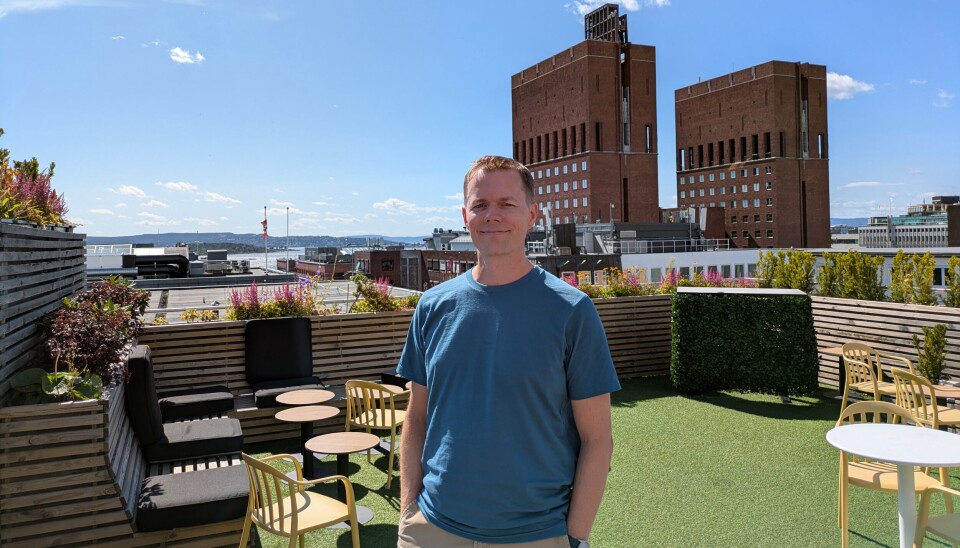
Invisible technology: Why boring infrastructure wins
How Labrador CMS built infrastructure that 350 newsrooms never think about—and why that's exactly the point
"The tech should be invisible," says Ole Andreas Flaaten Jonsgård, CTO at Labrador CMS. "It should feel boring, in the best way possible."
"We try our best not to be in the way of the process," Jonsgård explains. This means infrastructure that scales predictably, fails gracefully, and recovers quickly. Boring wins when uptime matters more than GitHub stars.
When you’re running a CMS that serves billions of pageviews across 350 newsrooms, ‘stable’ isn’t a nice-to-have. It’s mission critical.
The tech should be invisible. It should feel boring, in the best way possible.
For Ole Andreas Flaaten Jonsgård, CTO at Labrador CMS, the real work takes place behind the scenes. While editors publish in real-time and developers ship features daily, Labrador manages complexity at scale.
The team’s job? Innovate, build fast, and don’t break the newsroom.
Engineering for momentum
Behind the scenes, one of the biggest technical challenges keeps the engine running. “We’re processing around 1,500 requests per second to our front server,” says Jonsgård. “That’s a massive amount of traffic to handle, especially when you're aiming for performance and cost-efficiency.”
Labrador’s CMS architecture is designed not only for speed, but also for resilience during traffic spikes and unpredictable newsroom demand.
Jonsgård and his team need to move fast without introducing chaos. In his view, if a journalist has to wait for a developer in a busy newsroom, that’s a failure. “The goal is not to be in the way of the process of editors getting their articles out,” he explains.
If a customer asks for new functionality in Labrador CMS, and we think, ‘Yeah, that’s a good idea; we’ll make sure that everybody gets it.
Stability and innovation aren’t at odds. Labrador is built to handle high-velocity environments, both editorial and technical. To keep things moving, every component is built for modularity. Development is organized around team specialization and system flexibility. That means updates roll out fast yet cleanly
For Labrador, stability and innovation are two sides of the same coin. If a newsroom slows down or breaks, that’s unacceptable. It’s this commitment to seamless reliability, the hidden engine beneath every headline, that powers billions of daily pageviews. And it’s what lets journalists focus on the story, not the system.
“If a customer asks for new functionality in Labrador CMS, and we think, ‘Yeah, that’s a good idea; we’ll make sure that everybody gets it.”
Journalists first, always
Labrador was born inside a newsroom, and it shows. A headline tweak or image swap won’t ripple into something else. Journalists keep working. Uninterrupted.
In high-pressure newsrooms, delays cost stories.
“Set it up in the front page editor, press publish, and you’re done,” says Jonsgård. “No need to call the dev team. No waiting a week.” To understand how Labrador got here, it helps to go back to its roots.
Set it up in the front page editor, press publish, and you’re done,” says Jonsgård. “No need to call the dev team. No waiting a week.”
Many CMS platforms claim to be "made for newsrooms", but few are built with editorial logic in their DNA. Labrador’s approach is different. It began as the internal development team of a newspaper. As Jonsgård explains, “We had a very tight relationship with the journalists, and that's something we keep today.”
Jonsgård emphasizes that Labrador isn’t only about feature development; it’s about creating tools that fit the modern newsroom workflows. That might mean smarter tools for live coverage, faster asset handling, or tailored integrations. The development team watches how journalists work and adapts. If innovation doesn’t make publishing faster or more intuitive, it doesn’t launch.
AI where it fits (and where it doesn’t)
AI hype is in full swing. Including in today’s newsrooms. Labrador is staying focused on utility, not novelty. The aim is to support human editors, not replace them.
“There’s a lot of noise,” says Jonsgård. “Some of it's sort of well-founded, and some of it's just that, hype! Labrador isn’t here to generate AI slop.”
There’s a lot of noise. Some of it's sort of well-founded, and some of it's just that, hype! Labrador isn’t here to generate AI slop.
Labrador invests in AI and automation where it improves workflow, surfaces smarter insights, or saves time.
Jonsgård’s team focuses on reducing editorial friction so that editors can concentrate on the stories themselves, not the tools.
Labrador’s integration of AI includes time-saving features, including:
AI charts that auto-generate visualizations from data or in-article figures
Title and intro suggestions to help spark headline ideas while keeping editorial control
Automated summaries and factboxes to improve article readability, especially for readers arriving via search or social
SEO title/description suggestions tuned for relevance and searchability
One-click full article translation (including metadata, tags, and quotes) across languages
Auto-tagging to improve content organization and feed accuracy
Image captioning seeded by the article body
Cite & translate tools that help newsrooms quote and verify foreign-language sources fast
Labrador AI is invisible when you don’t need it, yet powerful when you do. If AI adds complexity or uncertainty, it doesn’t get released. AI is powerful, but context matters.
Where AI fits according to Jonsgård:
Workflow automation (charts, tagging, translations)
Idea generation (title/intro suggestions)
Content enhancement (summaries, SEO suggestions)
Verification and citation assistance
Where AI doesn’t fit:
Replacing human editors or generating content without oversight
Adding complexity or uncertainty to editorial processes
“I think we’re seeing some interesting use of AI. We have the ability now to automate more boring tasks, such as automating images, image annotating and creating metadata. Creating texts on images is super easy to do automatically now. It creates a real difference for both the journalist and for those readers who need more accessibility features. I think that's going to be very coo
The under-the-hood power users don’t always see
Most editors interact with a clean, straightforward interface. What they don’t see is the stack of performance optimization and extensibility beneath it, from real-time cache layers to developer-friendly APIs and integrations.
In many respects, Labrador could be likened to a high-performance car, packed with features under the hood, but most people only use drive and park. Labrador CMS wants to show what’s possible when teams are ready to go deeper.
We make sure it's easy to get articles out the door fast, especially for breaking news. Boom, publish. We've also built powerful tools for richer storytelling.
“We make sure it's easy to get articles out the door fast, especially for breaking news. Boom, publish. We've also built powerful tools for richer storytelling. You create longform reads with parallax features, use advanced layouts, or build visually engaging experiences. That’s something I see some customers utilise a lot, others not so much. And that’s okay.”
He’s not kidding.
Aside from flexible content modeling, Labrador supports paywall tools (integrates with your paywall), analytics integrations and more. These include connections to analytics platforms, A/B testing tools, and personalization engines that integrate seamlessly with Labrador's architecture. These plug into the system without slowing it down. For teams looking to personalize, optimize, or experiment at scale, the tools are there.
What’s next?
Jonsgård says he’s most excited about making things easier and smarter for both editors and developers. And there is plenty in the pipeline. Jonsgård reveals, “It's not a single cool feature. We have some interesting stuff coming on mobile editing, which will be cool. It's not quite ready yet. “We’ve looked at why you might need to edit or create an article on your cell phone and how we can make that as painless as possible and still enable you to do what you need to do.”
We’ve looked at why you might need to edit or create an article on your cell phone and how we can make that as painless as possible and still enable you to do what you need to do.
The vision for Labrador is steady: fast, focused, newsroom-built tech that lets publishing teams do more with less overhead. No drama. No downtime. Just serious power, running in the background.
The best technology often feels boring because it doesn’t interrupt. And behind that kind of quiet reliability is the engine room.
Back to the engine room
At the heart of Labrador lies the engine room, the silent powerhouse where everything comes together to keep newsrooms moving at pace. The steady hum of Labrador’s engine room is a space designed not for flash, but for progress. “The tech should be invisible,” says Jonsgård. “It should feel boring, in the best way possible.”
Behind that unassuming facade is a system designed for relentless momentum. For Labrador’s CTO, speed is critical, but so is sanity.

